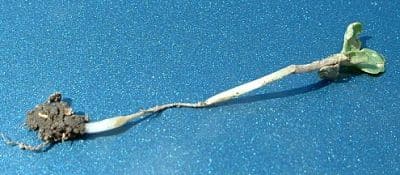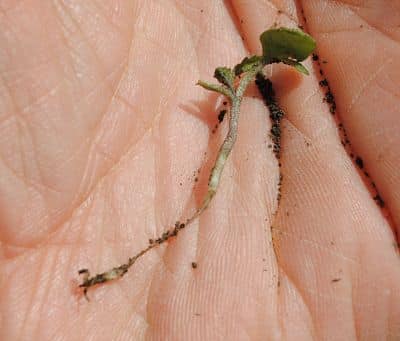 Cold soils, frost and generally low air temperatures have slowed canola growth. Seedling diseases are starting to show up as fungicide seed treatments start to lose their effectiveness after a few weeks.
Cold soils, frost and generally low air temperatures have slowed canola growth. Seedling diseases are starting to show up as fungicide seed treatments start to lose their effectiveness after a few weeks.
No foliar sprays are available for seedling diseases, but growers should still dig and look at roots and stems to identify whether disease is the cause for weak plants.
Mushy or thin wiry roots and stems are often the result of seedling disease. Seedling diseases caused by fusarium and pythium species tend to be worse in cool, wet conditions while rhizoctonia tends to be worse when canola emergence is delayed due to cool, dry conditions.
Understanding what contributed to seedling disease in fields this year may help plan for better results in your canola fields next year. Tight canola rotations may also be building up seedling disease inoculum levels. In non canola years, control brassica weeds that host these diseases and use seed treatment on cereals. Deep seeding, as evidenced by long hypocotyls which are exposed to more soil, can also increase potential for seedling disease.
In rare cases where whole fields are wiped out, reseeding may be required. Assess the stand first. At this stage of the season, 1-2 healthy plants per square foot probably have more yield and profit potential than a reseeded crop.

